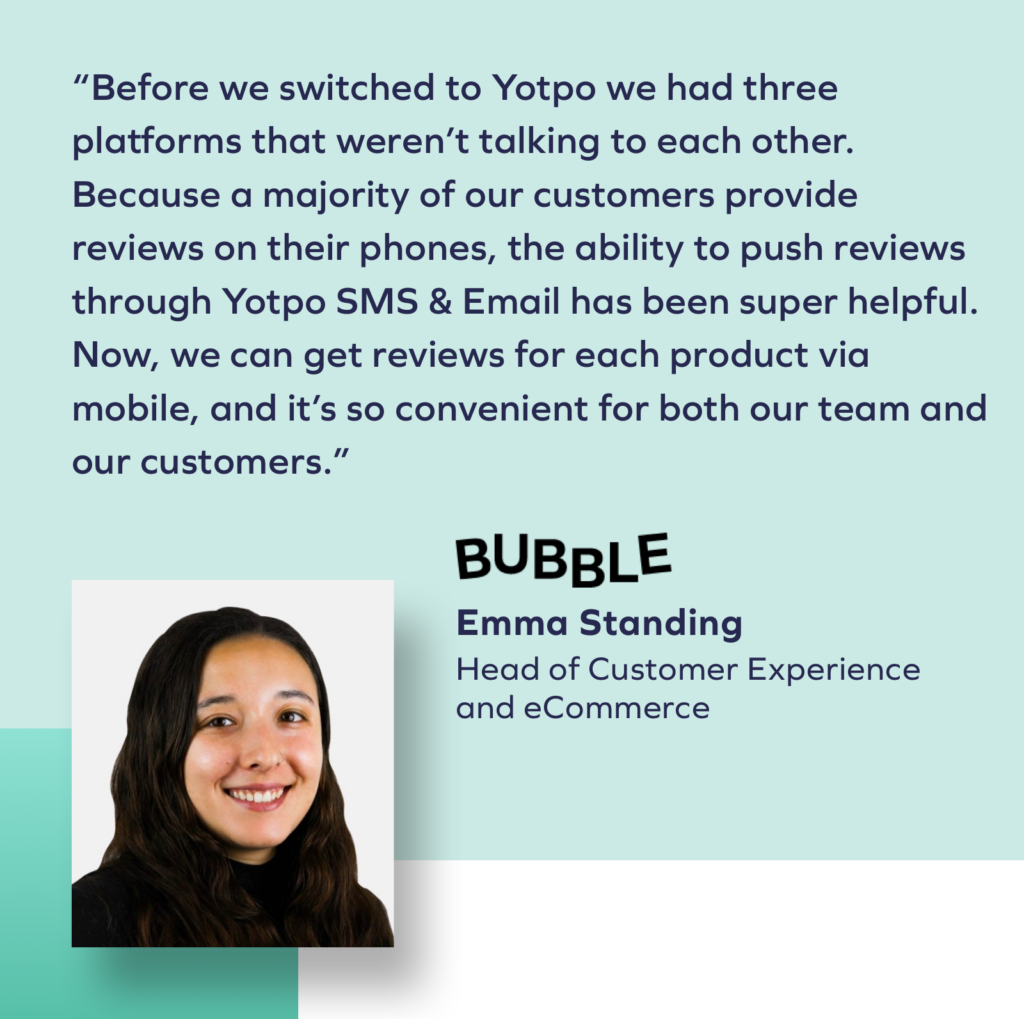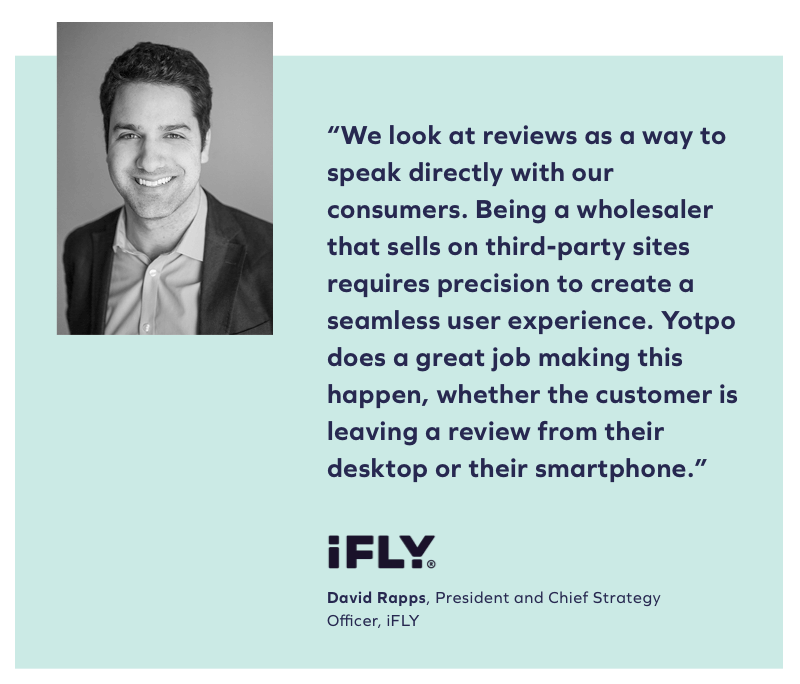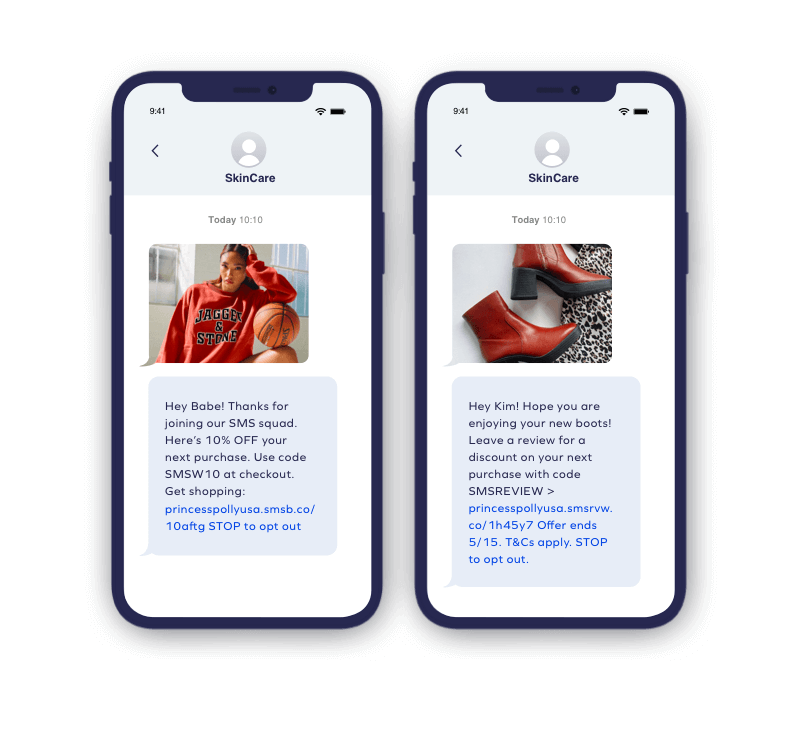Customers now rely on mobile devices to discover brands, write reviews, and generate social proof — on top of day-to-day browsing and purchasing. Likewise, mobile-friendly experiences are essential for creating a seamless online customer journey. From shoppers receiving brand announcements via email and text messages to satisfied customers tagging their favorite brands on social media, the benefits of creating mobile-first experiences for your customers are seemingly endless.
According to a 2022 Statista mobile eCommerce survey, smartphones are now the primary device for retail website traffic and orders, accounting for 65% of online browsing and shopping. From brand discovery to checkout, delivery to review request, and product review to reward, it’s never been easier for brands to engage with shoppers on their mobile devices.
Because shoppers spend so much time on their phones and complete purchases with their smartphones, SMS is now one of the most successful channels to communicate with consumers directly. Let’s look at the benefits of syncing SMS with your reviews strategy, and how some brands are integrating SMS and Reviews and best practices for requesting reviews via text message.
Reviews reimagined: The benefits of adding SMS
In a mobile-first shopping landscape, brands should incorporate innovative ways to collect more reviews and enhance their reviews strategy — and SMS is a fantastic channel to do so. One way to do this is by requesting reviews via SMS message and setting up SMS flows, which are automated messages sent based on customer actions. These SMS marketing features can help your brand boost review collection by up to 66%.
In addition to increasing review conversion by collecting more reviews, you can reduce abandoned cart rates by pushing UGC and star ratings via SMS. Leverage UGC, such as reviews, and VUGC to generate more social proof and create a more user-friendly experience during the review collection process. We pulled some examples of how other brands are using text message marketing, on top of email marketing, to grow their brand and level up their reviews strategy to better illustrate these benefits.
3 ways brands are upgrading with SMS and Reviews
1. Boosting review collection with SMS: Bubble Skincare
Bubble, a fast-growing D2C skincare brand launched in 2020, aims to provide high-quality and accessible products for teens and young adults. Bubble Skincare identified that their primary audience tends to shop with their smartphones and noticed high-engagement rates on mobile devices. To successfully grow their brand, drive traffic to their site, and increase review collection, Bubble knew they needed to provide mobile-friendly integrations for their shoppers.
As a result, Bubble leveled up their review strategy by adding Reviews and SMS. Since then, Bubble has collected thousands of reviews, boasting a 4.83 average star rating and a 48.6% conversion rate after engaging with widgets and UGC. More specifically, product integrations between SMS and Reviews promote a user-friendly experience for both shoppers — 86% of their reviews come from mobile devices — and internally for the brand itself. The convenience of requesting reviews via text message has helped the brand drive review collection, lifting their overall conversion rates.

2. Generating social-proof and reducing abandoned cart rates: Princess Polly
Another example of a brand successfully enhancing their reviews strategy with SMS is Princess Polly. With an industry-leading SMS flow builder, Princess Polly generated a 61x ROI by leveraging SMS abandoned cart flows with existing UGC and star ratings.
These innovative strategies have helped Princess Polly see continued growth, especially by tapping into the needs of their primarily Gen-Z audience — online engagement and mobile-friendly experiences — which can be achieved through SMS.
Integrating SMS into Princess Polly’s reviews strategy has contributed to the brand’s growth. By leveraging review collection, specifically SMS review requests, Princess Polly increased their CVR by 498%. In addition to requesting reviews via text message, the brand leverages UGC and star ratings in abandoned cart SMS flows and generates high-quality reviews with Smart Prompts. Smart prompts are a feature that suggests high-converting topics for customers to write product reviews. In effect, shoppers receive texts that include the UGC and star ratings about the specific products in their abandoned carts. Princess Polly can then drive shoppers back to their site to complete their purchases.
3. Creating a seamless review collection experience: iFLY
Leading luggage brand iFLY also successfully enhanced their online review strategy by leveraging SMS and Reviews. Creating a seamless and positive review experience is particularly important for wholesale brands like iFLY, which depend on third-party retailers, such as Walmart.
The brand leveraged customizable SMS review request flows, which can be triggered based on customers’ purchases and interests, driving customers to leave Smart Prompt powered reviews. This ultimately helped remove customer hesitation from leaving reviews and helped create a seamless review experience. In fact, iFLY boosted their daily review collection by 7x simply by using SMS marketing and Reveiws’ integrations.
iFLY didn’t just stop there. The brand went the extra mile, finding ways to incorporate the review process throughout the entire customer journey. iFLY gathers customer feedback and analyzes specific keywords (provided by customizable Smart Prompts, pushed via SMS). They then are able to print impactful customer reviews directly onto their packaging. With increased review generation via SMS, iFLY engages consumers on a channel they weren’t previously leveraging and turns those reviews into impactful UGC. Ultimately, this unified the customer journey. This strategy separates them from other competitors selling on third-party sites; iFLY speaks directly to their shoppers regardless of where they purchase.

Best practices for requesting reviews via SMS
Are you still thinking of ways to get the most out of your review requests with SMS? We’ve got you covered. Here are three ways you can enhance your review collection process with SMS.
1. Enable multiple SMS sign-up methods for shoppers
Creating multiple SMS sign-up opportunities, such as QR codes and on-site pop-up banners, increases sign-up rates significantly. Once customers join your SMS subscriber list, you can then easily push review requests via text message or set up more advanced SMS flows, such as text messages triggered by abandoned carts.
2. Create omnichannel review request flows via SMS
According to a recent Yotpo SMS survey, 65% of online customers buy or browse on their mobile devices. Brands must create omnichannel review collection flows (e.g., email, social, bulk SMS templates, loyalty programs, and on-site widgets) to encourage review submissions and engagement via SMS. By requesting reviews on-site, via email, and by SMS, shoppers can choose their preferred method to leave a review.
3. Customize and optimize the user experience
In the same way, it’s crucial to maintain on-brand messaging on your site and on social; customizing the messaging in your SMS marketing humanizes interactions between on-site widgets, pop-ups, and text messages. For instance, inputting your customer’s details and adding your brand’s voice into the messaging creates a memorable and personable user experience, helping you stay top of mind with your customers.

Upgrade your Reviews with SMS
Ultimately, collecting reviews is an essential component of growing your brand online. By integrating SMS requests with Reviews, companies can collect reviews where it’s most convenient for shoppers — on their smartphones. Likewise, brands should choose mobile-friendly products that seamlessly integrate into their existing tech stack to stay competitive in an increasingly mobile-first eCommerce landscape.




